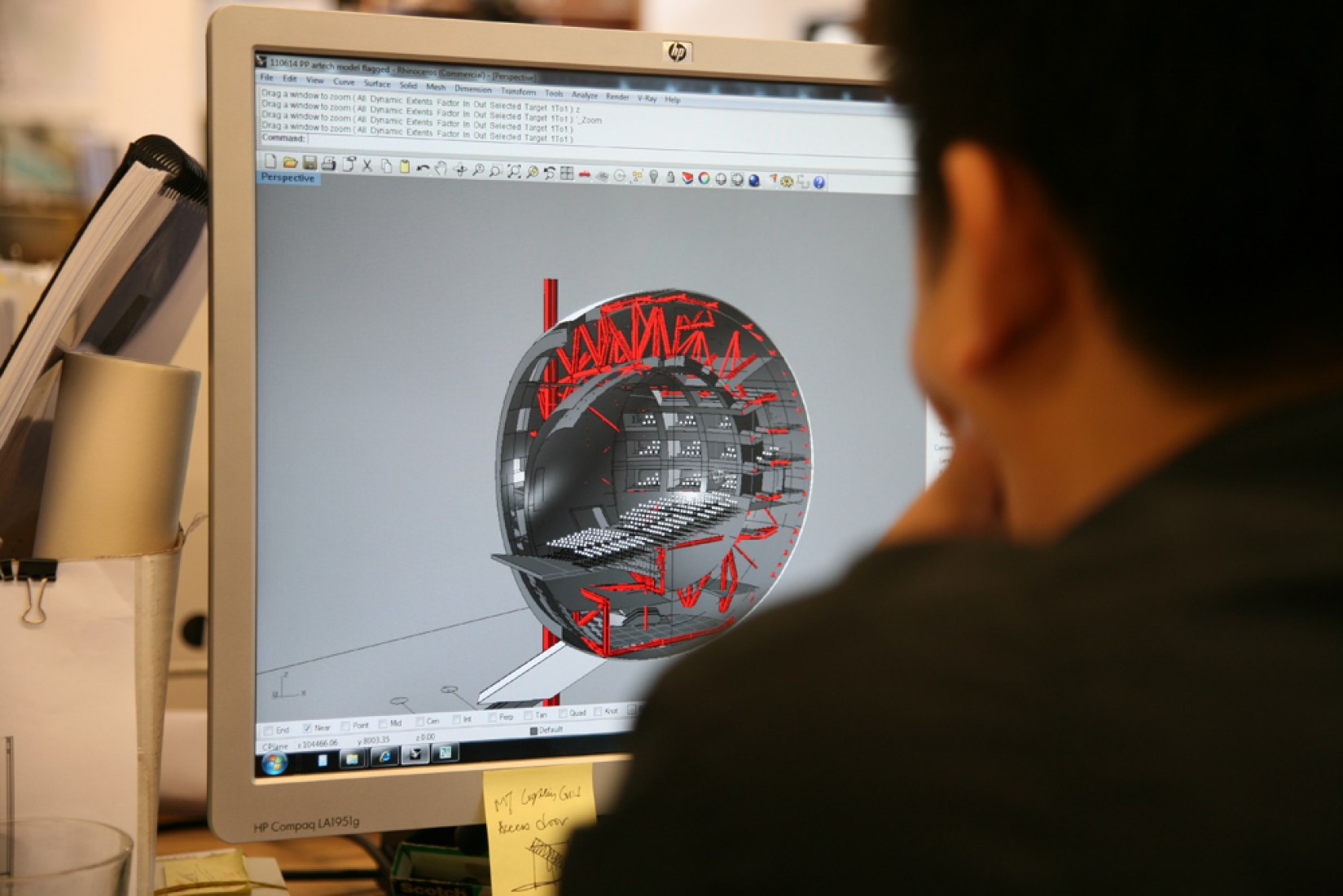An exceptional exhibition, only to intelligent minds.
Arranged by Rotor in loose, intuitive categories like 'and yet it moves', 'white or shiny', and 'adaptation', the exhibition includes: a video of over 3 million images – every image on OMA’s server – shown at a rate of 24 per second (the video plays on a 48-hour loop); a series of faxes between Rem Koolhaas and Arup figuring out the structure of CCTV; a seat from Milstein Hall, Cornell, that emerges mechanically from the floor at the touch of a button; a ‘fake’ AMO exhibition, assembled from an instant-exhibition kit we made but have never used; constantly updated images from four OMA building sites around the world; a room of only white and shiny objects.

West entrance. OMA/Progress. Barbican. © All rights reserved. Courtesy of OMA.
An ambition that Rotor inherited from OMA is the opening of Barbican Art Gallery's west entrance for the first time, realising the original architects' intent.
On 25 October, all seven OMA partners will speak at the Barbican in a special event. For full details and booking, visit here. The exhibition runs until 19 February 2012.

OMA / Progress is guest curated by the Brussels-based collective Rotor, who were behind the much praised Belgian Pavilion at the 2010 Venice Architecture Biennale. With unprecedented access to OMA’s archives and daily practice, Rotor has selected and arranged a wide range of materials, relics, documentation, imagery and models yielding fresh perspectives on OMA’s built and unbuilt projects and conceptual work. Rotor comments: ‘Our ambition is to make a portrait of OMA without expecting consistency. What we try to do is reach beyond polemics to create a space where nuance is possible’.
OMA / Progress delves into the inner workings of OMA’s intense productivity, providing up-to-the minute detailed insight into OMA operations across Europe, Africa, Asia and America. It features projects currently in development including the Prada Foundation, Milan; those under construction such as Cornell University’s Milstein Hall, New York; and the CCTV headquarters in Beijing; recent competition entries like the Broad Art Museum in Los Angeles; and those that are on-hold indefinitely, like the Dubai Renaissance hotel and the White City masterplan in London. Recent projects by OMA’s research unit, AMO, are also on show, including its plans for a European renewable energy grid, a curatorial masterplan for the Hermitage Museum in St Petersburg, and the work of Strelka, a new postgraduate school that AMO helped set up in Moscow.






























